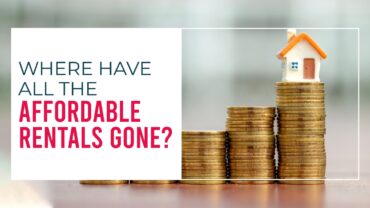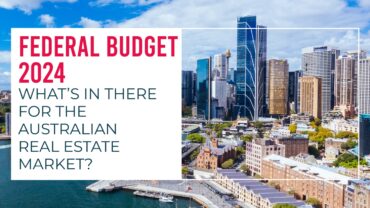Investing in real estate can be highly rewarding, but it’s not without its pitfalls. Many investors have faced costly mistakes in their property portfolios, which can have long-lasting financial implications. However, the good news is that these mistakes can be rectified. In this blog, we will guide you through the process of creating a sustainable property portfolio that can withstand market shocks and generate consistent income to pay off debts. We’ll emphasize the importance of developing a solid property strategy, regardless of whether you’re a first-time investor or aiming to become a high-net-worth individual.
To ensure that you build a successful property portfolio, you need to plan carefully and have a long-term perspective. We will explore the key steps involved in transitioning from a novice investor to a seasoned professional, placing significant emphasis on the value of a well-defined property strategy. Additionally, we’ll delve into the role of interest rates and deposits in creating positive cash flow properties, discuss various exit strategies to maximize returns, and analyze how macroeconomic factors influence the types of properties you should consider. By the end of this blog series, you will have gained valuable insights and actionable advice to avoid costly investment mistakes and take charge of your property portfolio’s success.
Property Portfolio Mistakes and Fixes
1. Buying non-investment grade properties
Investing in properties that don’t have the potential for long-term appreciation or rental income.
How to Fix it: Conduct thorough research and due diligence to identify properties with investment-grade potential. Consider factors like location, property condition, market demand, and growth prospects.
2. Poor timing in relation to property life cycles
Investing in properties at the wrong stage of their life cycle, leading to missed opportunities for growth and returns.
How to Fix it: Study the property market trends and understand the life cycle of properties in the area. Identify emerging or revitalizing neighborhoods that are poised for growth and invest accordingly.
3. Opportunity cost of buying in infill suburbs
Overlooking potential growth in favor of investing in established suburbs, missing out on significant returns.
How to Fix it: Evaluate both established and infill suburbs. Consider the future development plans, infrastructure projects, and market demand in infill areas. Assess the potential for appreciation and rental demand before making a decision.
4. Lack of understanding of suburb dynamics
Failing to comprehend the dynamics of the suburb, such as demographics, economic factors, and local amenities, which can impact property value.
How to Fix it: Conduct thorough research on the suburb you’re investing in. Analyze demographic data, economic indicators, infrastructure plans, and amenities available. Choose a suburb that aligns with your investment goals and has a positive outlook for growth.
5. Neglecting investment-grade properties
Investing in properties that do not meet the criteria for being considered investment-grade, leads to lower returns or potential risks.
How to Fix it: Define clear criteria for investment-grade properties, such as strong rental demand, desirable location, positive cash flow, and potential for future appreciation. Focus on acquiring properties that meet these criteria to minimize risks and maximize returns.
6. Ignoring the potential impact of wrong decisions
Failing to consider the long-term consequences of making incorrect investment decisions.
How to Fix it: Take a forward-thinking approach and assess the potential impact of your investment decisions on future growth and returns. Consider consulting with professionals, such as real estate agents or financial advisors, to gain insights and minimize the risk of making wrong choices.
By avoiding these common mistakes and implementing the suggested solutions, investors can enhance their property portfolios and increase the likelihood of achieving their investment goals.
Creating a Sustainable Property Portfolio
The process of transitioning from a first-time investor to a high-net-worth investor involves creating a sustainable property portfolio. A sustainable portfolio is designed to generate its own income for debt repayment, achieve growth over an extended period, and possess resilience to withstand market disruptions. This requires a strong property strategy, which involves understanding the role of interest rates and deposits in creating positive cash flow properties and using various exit strategies to maximize returns. Macroeconomic factors also play a significant role in influencing the types of properties you buy, so it’s essential to stay informed about these trends.
Avoiding and Fixing Property Investment Mistakes
To avoid and fix mistakes in your property portfolio, it’s essential to understand the dynamics of the suburb you’re investing in and choose investment-grade properties. Additionally, explore other opportunities that could be taken advantage of if you don’t sell a property right away. Remember, it’s crucial to use emotions to enjoy life and not drive financial decision-making based on emotions. Stay informed about market trends and make informed decisions about where to invest.
Investing in Positive Cash Flow Properties
Positive cash flow properties are a valuable addition to any property portfolio, offering a consistent income stream that surpasses expenses. These properties generate regular cash flow that can cover mortgage payments and other costs, contributing to the overall profitability of your portfolio. However, it’s important to approach positive cash flow investing strategically.
When building a sustainable property portfolio, keep in mind that positive cash flow is influenced by factors such as interest rates and deposits. Interest rates play a very important role in determining borrowing costs. By securing a favorable interest rate on your mortgage, you can reduce monthly payments and increase the potential for positive cash flow. Additionally, a larger initial deposit can lead to more favorable financing terms, resulting in lower mortgage payments and a higher chance of achieving positive cash flow.
Balancing immediate income generation with long-term growth potential is key. While positive cash flow provides immediate returns, it’s important to consider properties with growth potential over time. Diversifying your portfolio with both cash-flow properties and growth-oriented properties allows you to benefit from steady income and the potential for property appreciation.
Building a sustainable and profitable property portfolio is achievable with the right strategy, knowledge, and decision-making. By understanding the common pitfalls and mistakes made in property investment, you can better navigate your journey and create a resilient property portfolio that can withstand market shocks and generate its own income.
Remember to stay informed about market trends and macroeconomic factors that influence property investments, and always consider the dynamics of the suburb you’re investing in. With these strategies in mind, you’ll be well on your way to building a successful property empire.




